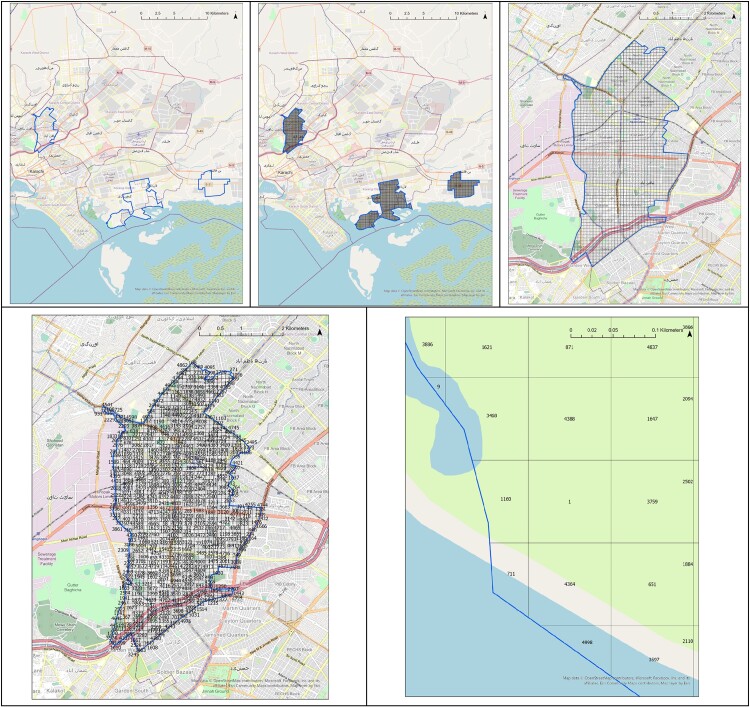Figure 1.
The process of creating and ordering clusters and assigning the cluster identification (ID) number within each Enterics for Global Health (EFGH) study area. Top left, EFGH-Pakistan study area borders (bold line). Top center, Square grid matching the dimensions of the Pakistan WorldPop raster (grid of fine lines), bounded by the EFGH-Pakistan study area (bold line). Top right, Detailed map of the northwest section of the Pakistan study area, with square grid (grid of fine lines) bounded by the EFGH-Pakistan study area (bold line). Bottom left, Each cluster is randomly numbered and labeled with a cluster ID number. Field teams visit each cluster in sequential order starting with cluster 1. Borders of the EFGH-Pakistan study area are bounded in blue. Bottom right, Detailed view of cluster 1 and surrounding clusters. The EFGH-Pakistan study site is bounded in blue. Cluster 711 is truncated by the study area. The Pakistan study area extends into the water in places owing to the delineation of official Union Council boundaries and the possibility of people living directly on the shoreline.

